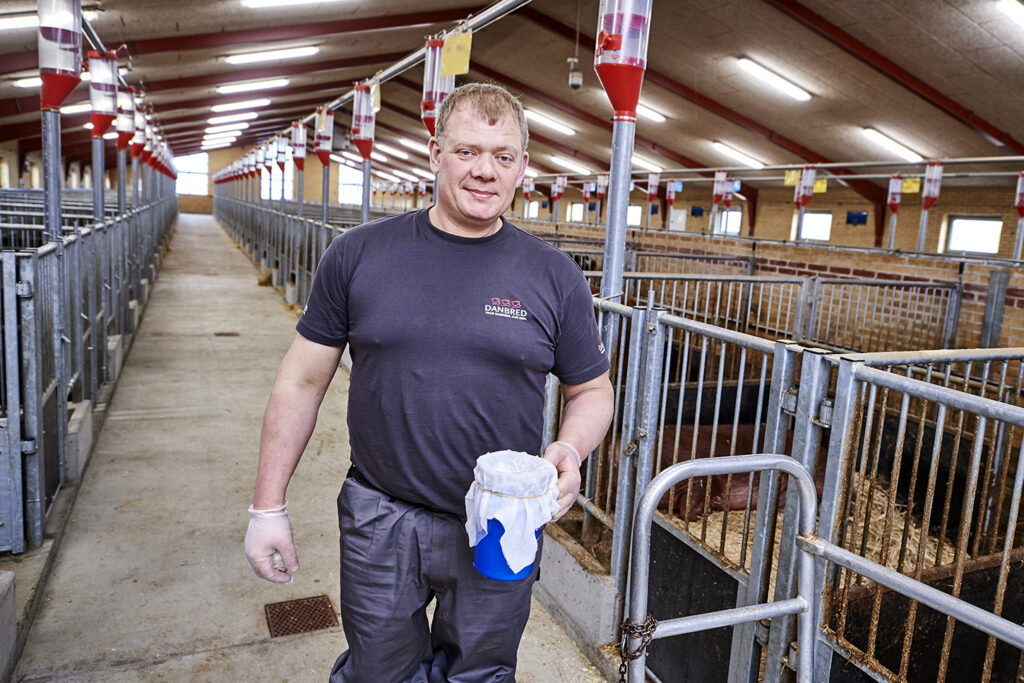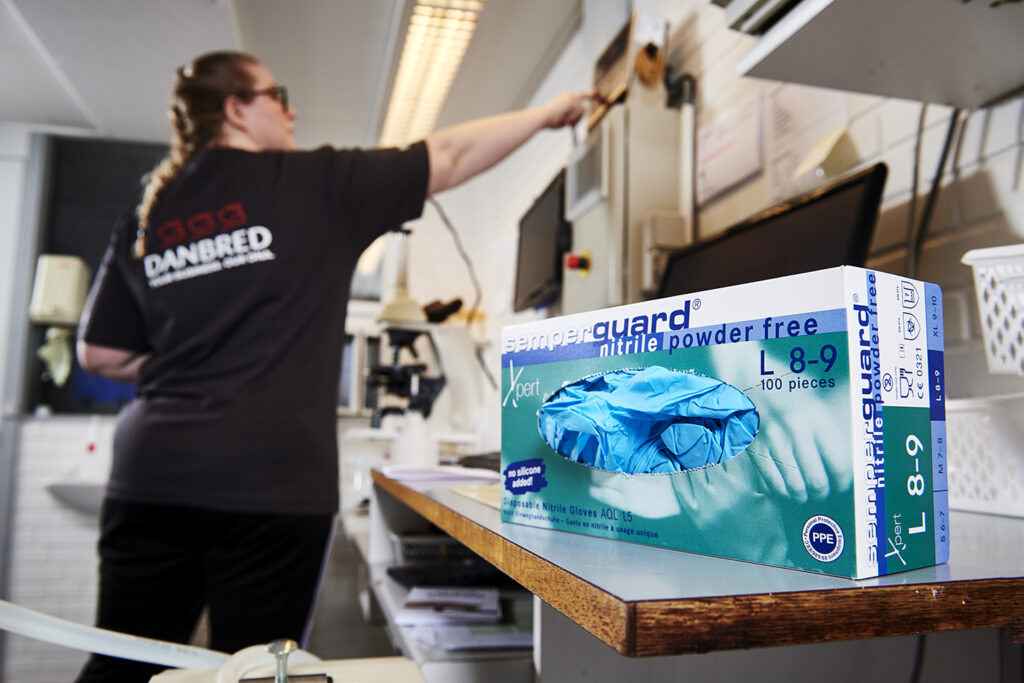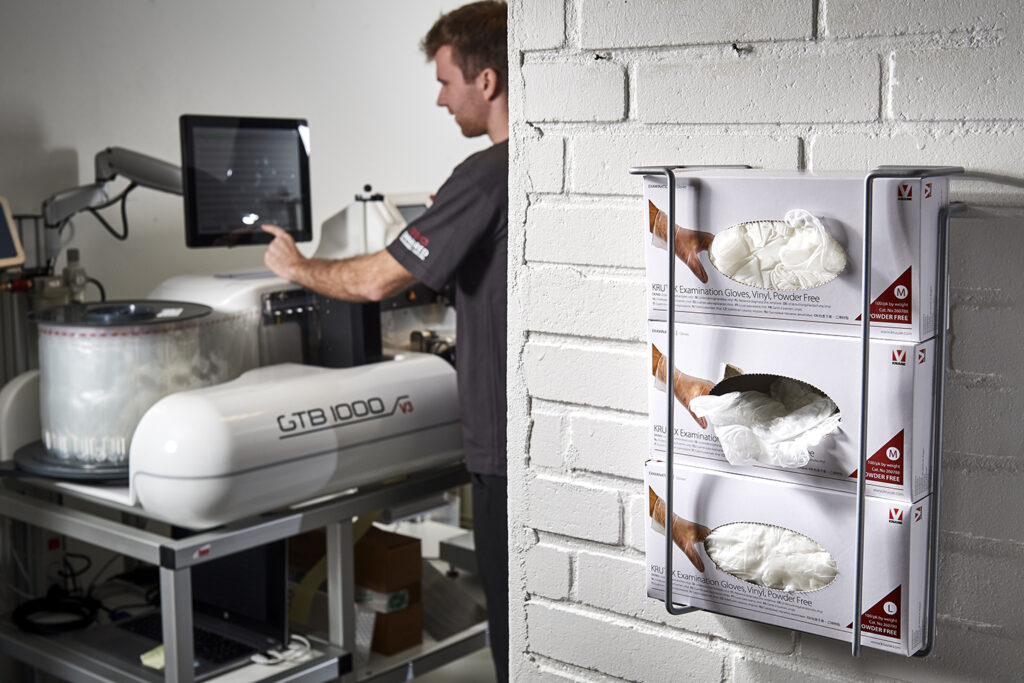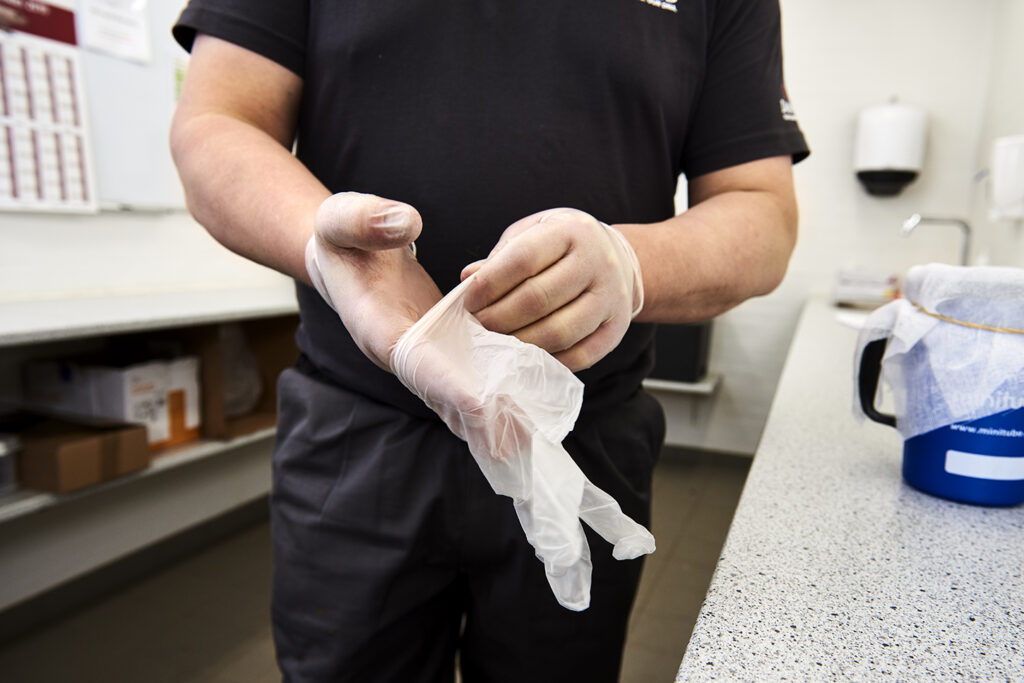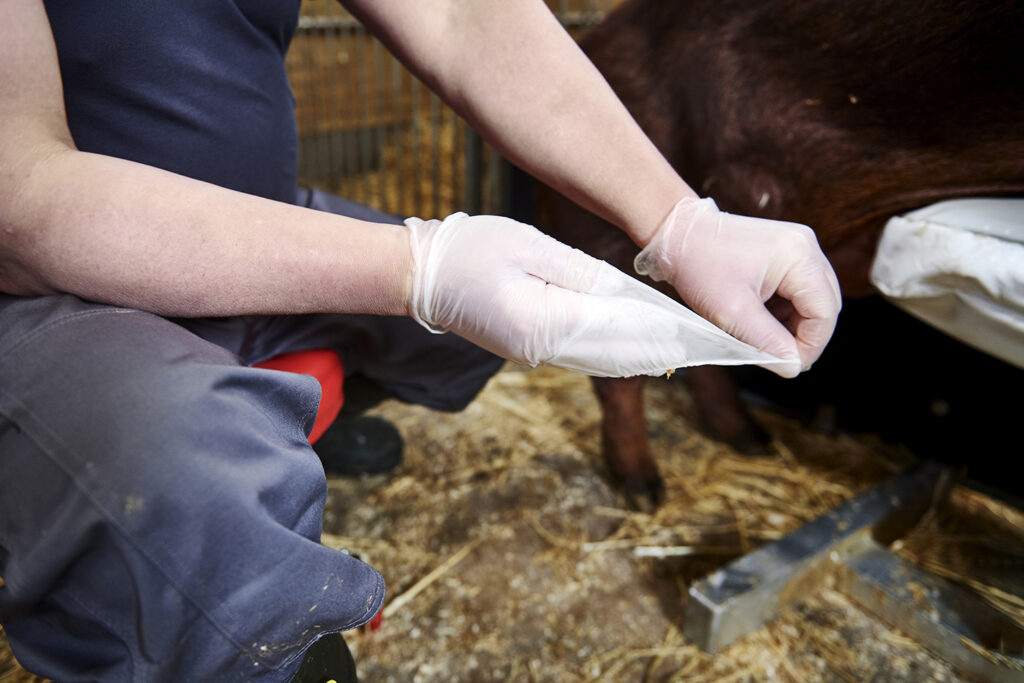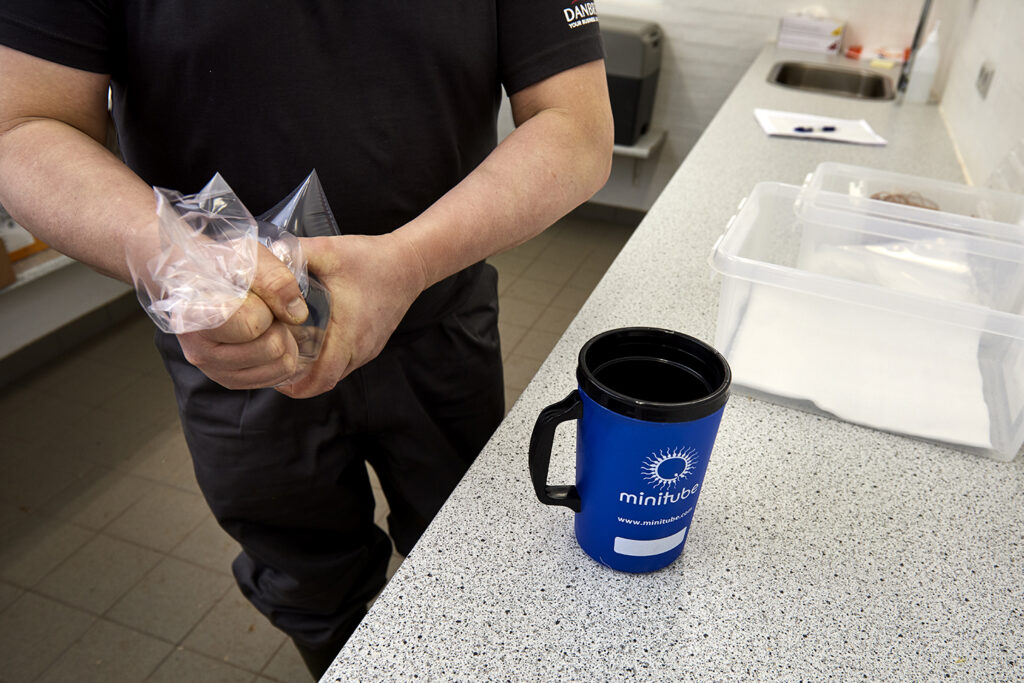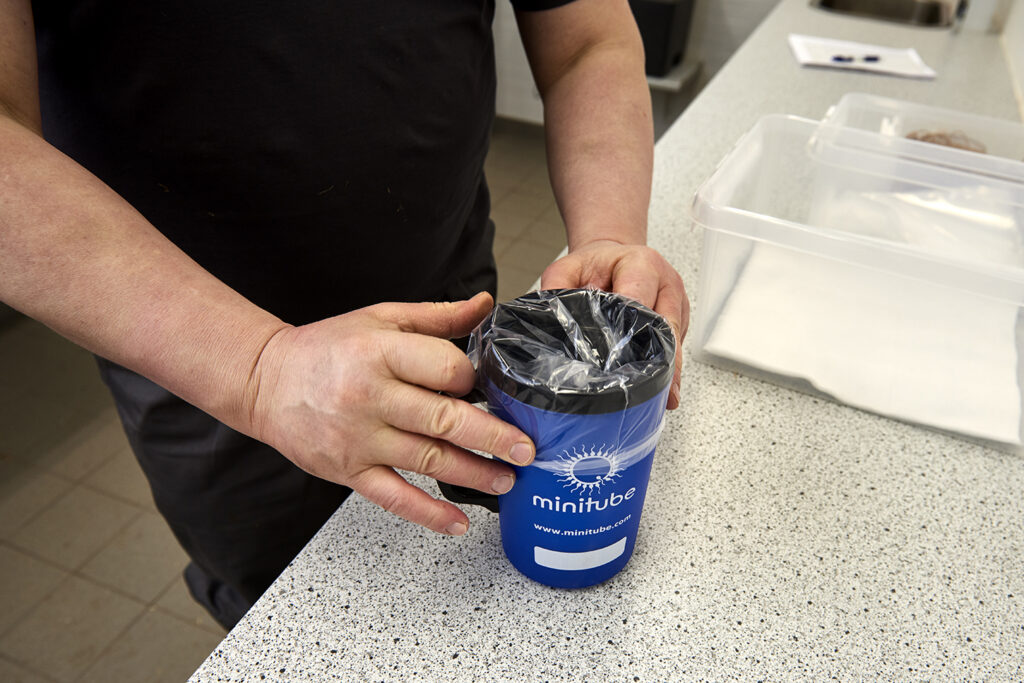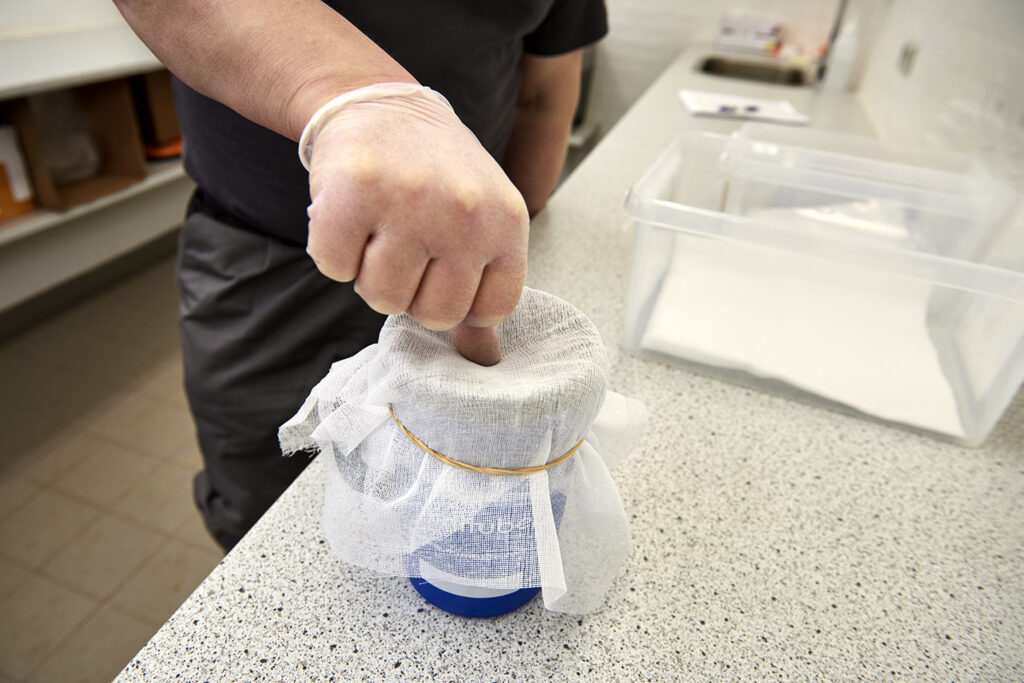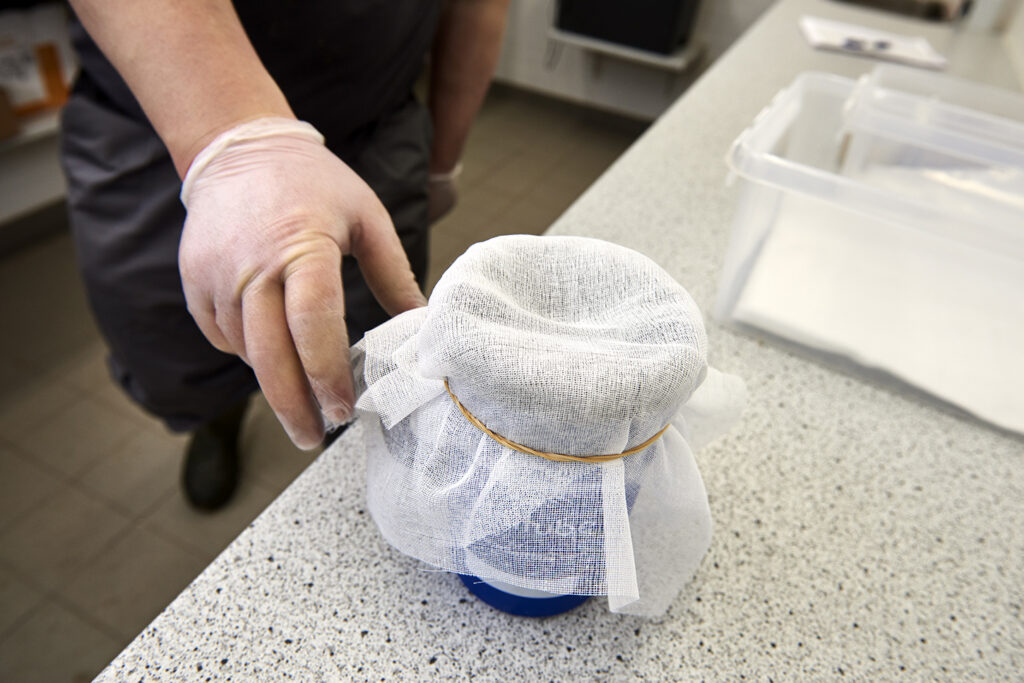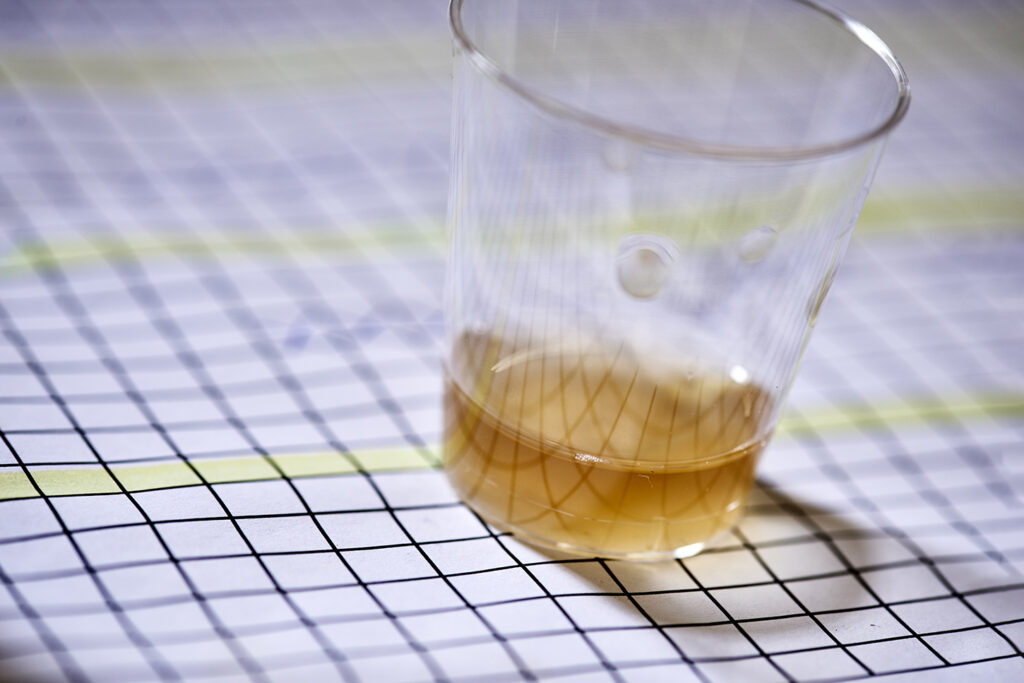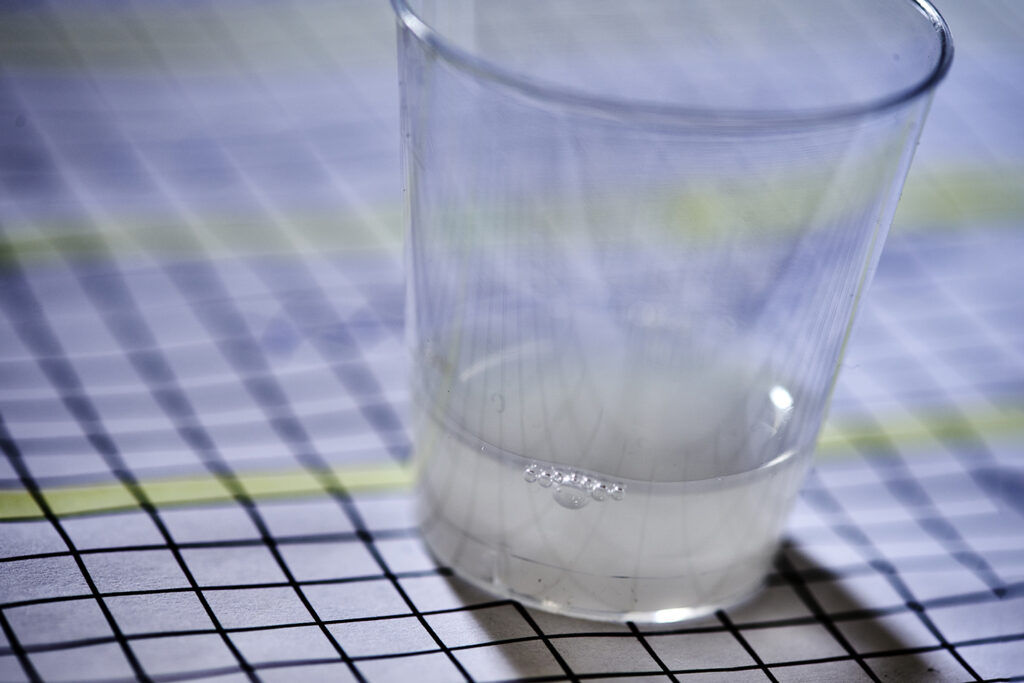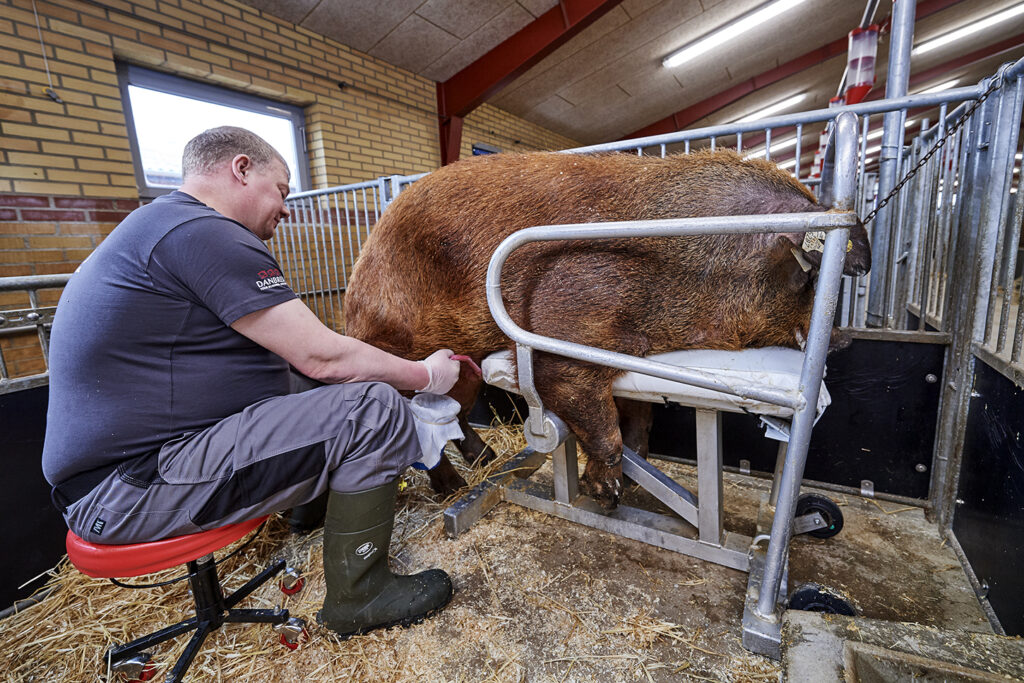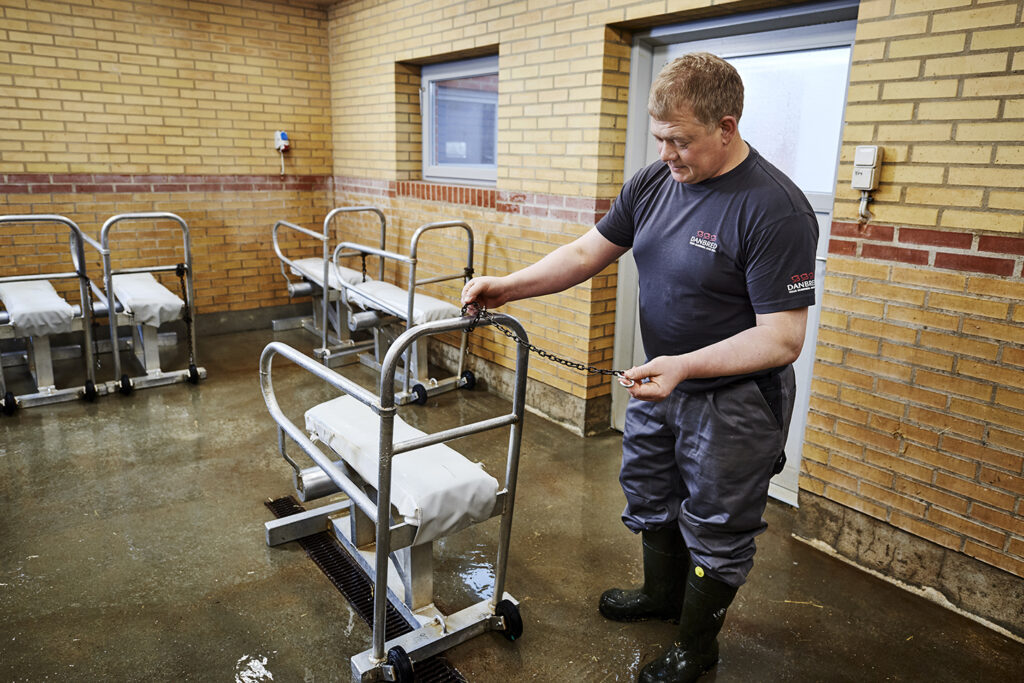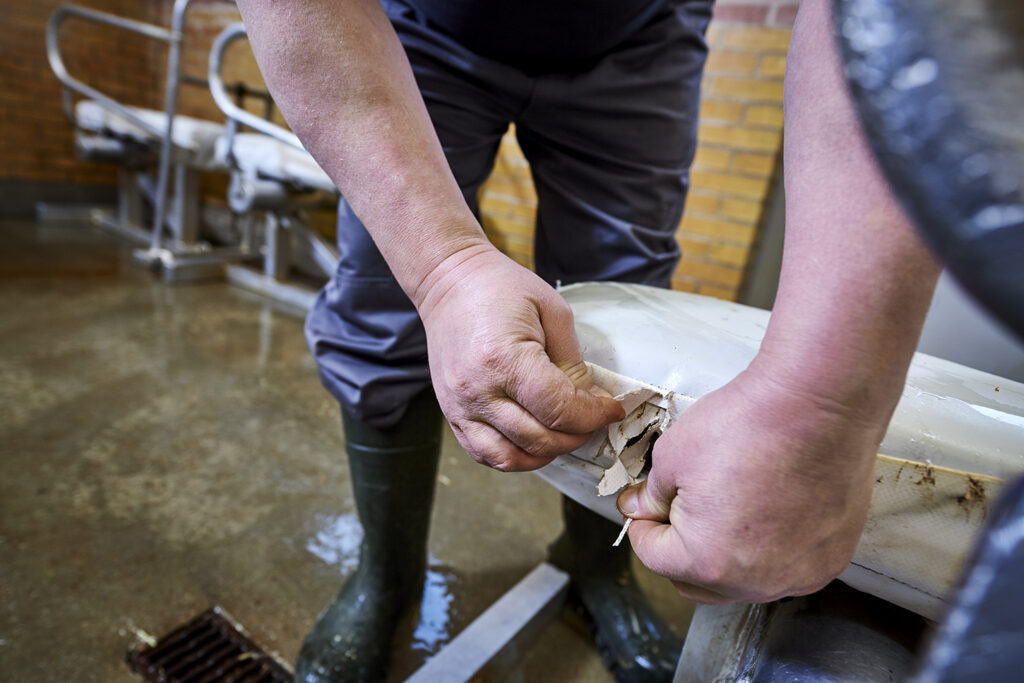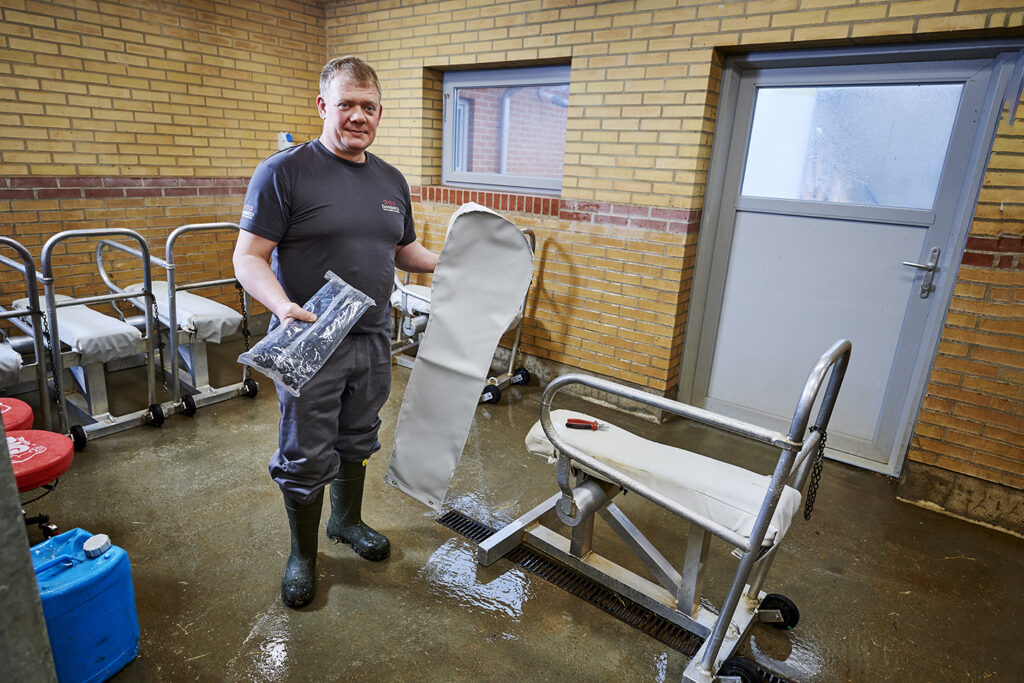Collection
You can initiate production cycles as soon as laboratory analysis confirms that the quality of the semen is high enough.
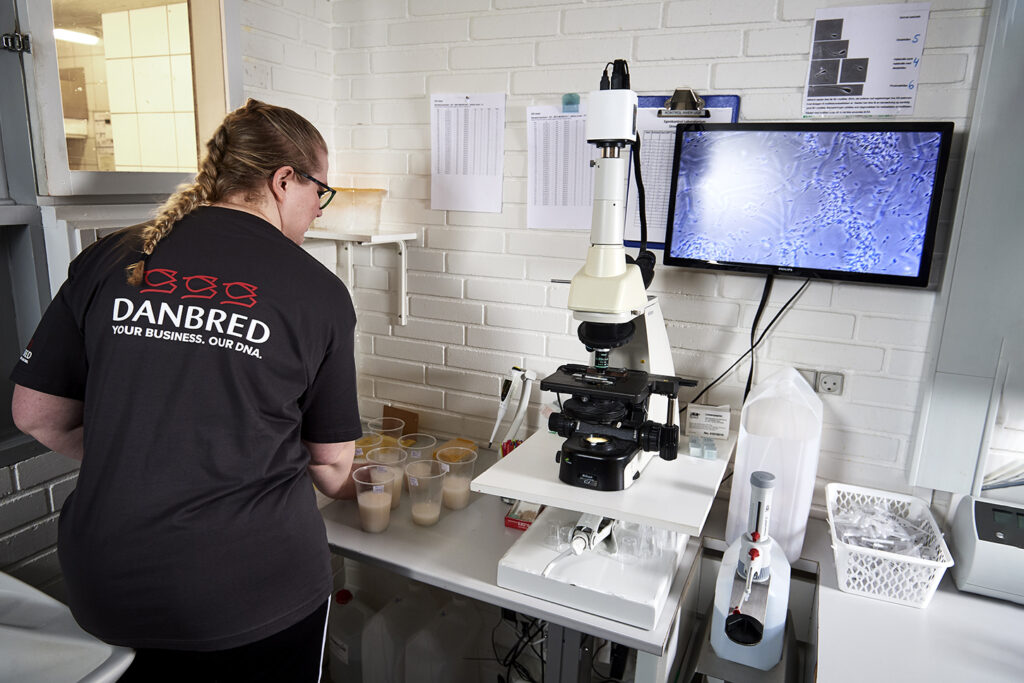 |
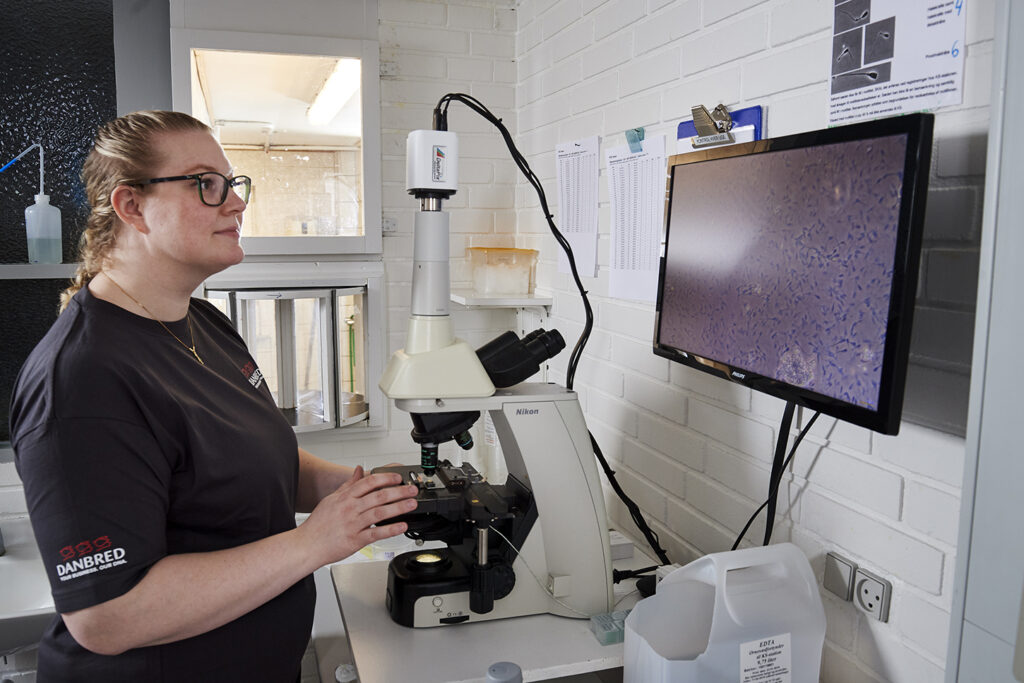 |
Strict routines and proper hygiene are of the utmost importance for the successful collection of semen. Every collection takes 8-10 minutes, but bear in mind that every boar is different, so it is to be expected that some boars will take longer than others.
Proper preparation for semen collection
Make sure that you have met all the conditions and precautions from “Training the boars” before you take the following steps:
Collection area
1. The height of the dummy should be adjusted, if possible, to match the size of the boar.
2. Make sure the pen floor is not slippery so the boar has the best chance of mounting the dummy.
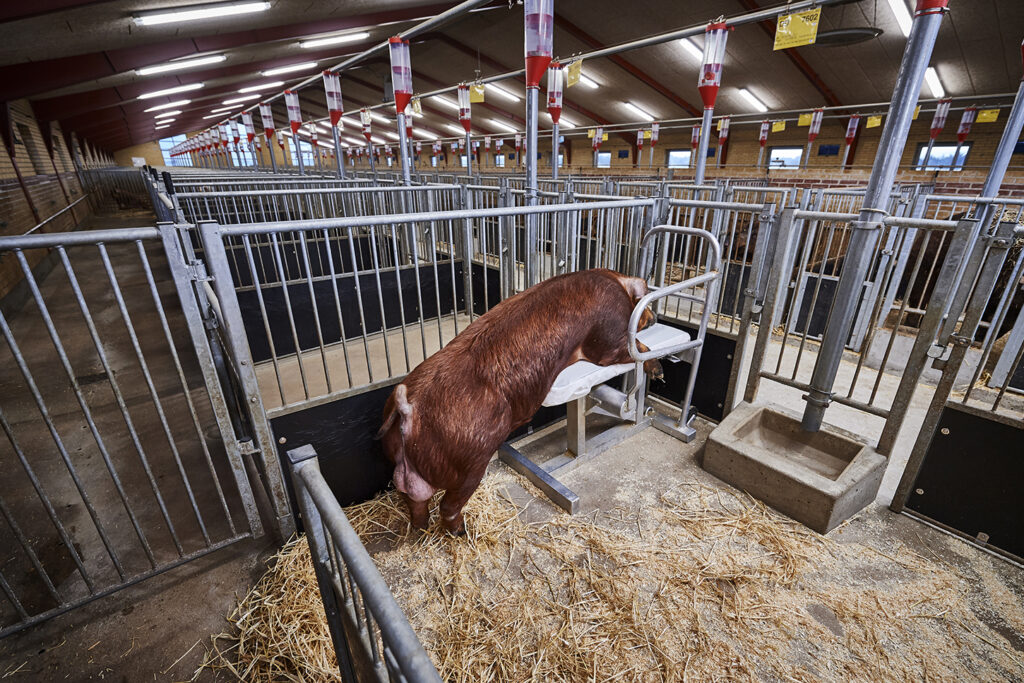
3. Fit the dummy with a safety bar to prevent the boar from sliding off either side of the dummy, and reduce the risk of the collector getting injured.
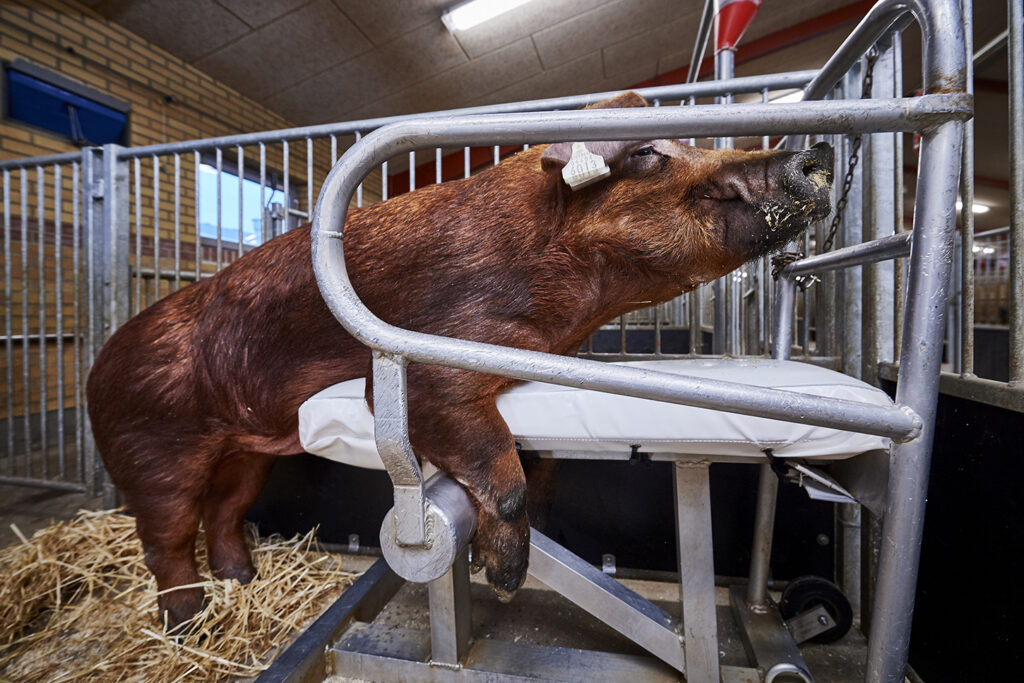 |
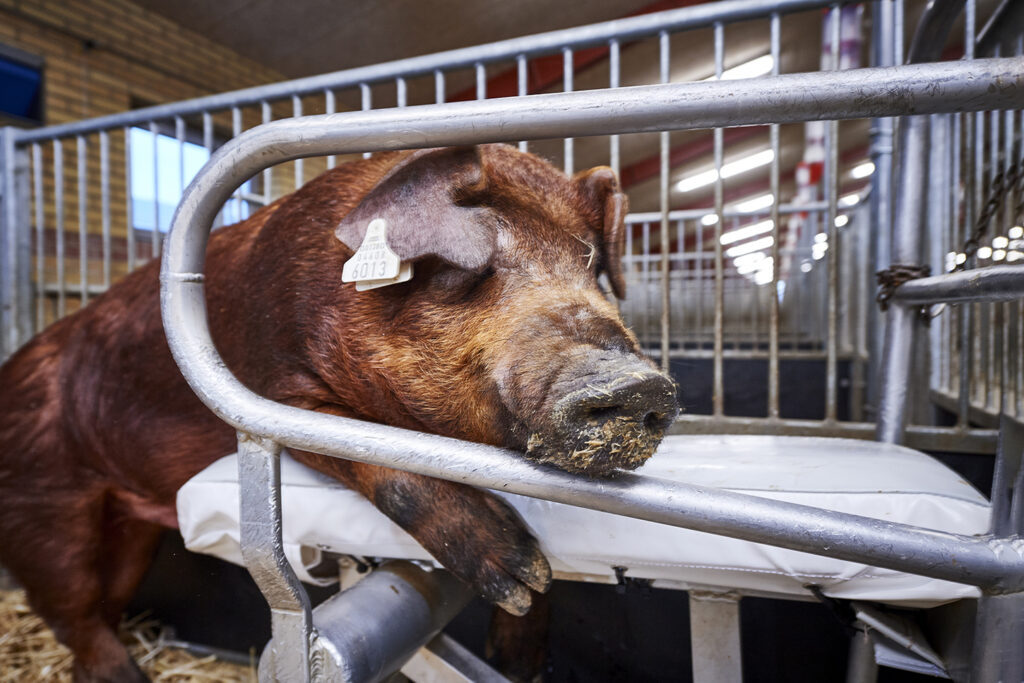 |
Equipment
1. Use only the appropriate professional materials for collecting semen.
2. Keep disposable gloves to hand – use vinyl gloves and avoid powdered gloves.
|
|
|
Wear two sets of gloves during collection and have extra gloves to hand in case hygiene is compromised.
|
|
|
)semen cells.
semen cells.
| Facts |
|---|
| An average ejaculation contains 200-400 ml of semen, with an average of 60-80 billion (109) semen cells |
3. Use an insulated plastic container to make sure temperature is under control during collection.
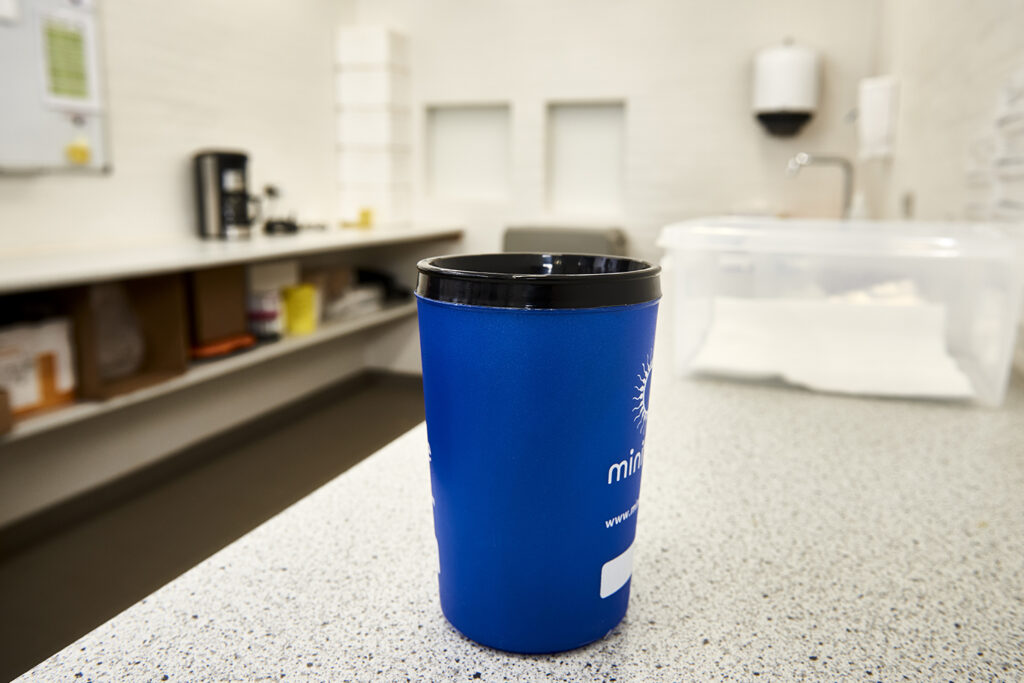
4. Line the insulated plastic container with an airtight plastic bag.
|
|
|
Place a double layer of gauze over the plastic bag and fix it to the rim of the container with a rubber band. The gauze will ensure that the gelatinous, post-sperm ejaculate does not mix with the semen you collected.

5. Make sure the gauze covering the plastic container is slightly hollow to make room for the semen. The gauze can be hollowed out with a gloved hand, but never touch the gauze unless strictly necessary to keep the risk of contamination to a minimum.
|
|
|
6. Besides the essential equipment for collecting the semen, you will also need a thermometer, notepad, wipes for cleaning and a trash bag for disposing of used gloves and so on.
7. In order to make all routines efficient and easy, it is a good idea to create a “tool box” to help you move containers and other equipment around in the collecting area with ease.
The collection of semen
When all the above preparations have been made, collection can begin. Make sure all equipment is ready for use before you turn your attention to the boar. For a successful collection, always stay composed and calm around the boar.
Remember, semen should be kept clean and free from contamination at all times. If it does become contaminated, dispose of it immediately.
Step 1: Place the dummy along the side of the pen. We recommend collecting the semen in the boar’s own pen, so you must be able to move the dummy around. Make sure the boar has enough room to mount the dummy and that afterwards, the boar can only back away from the dummy. The dummy should be placed close to the pen door, and be easy to remove from the pen without entering the boar pen. A properly trained boar will mount the dummy as soon as it is introduced to the pen.
 |
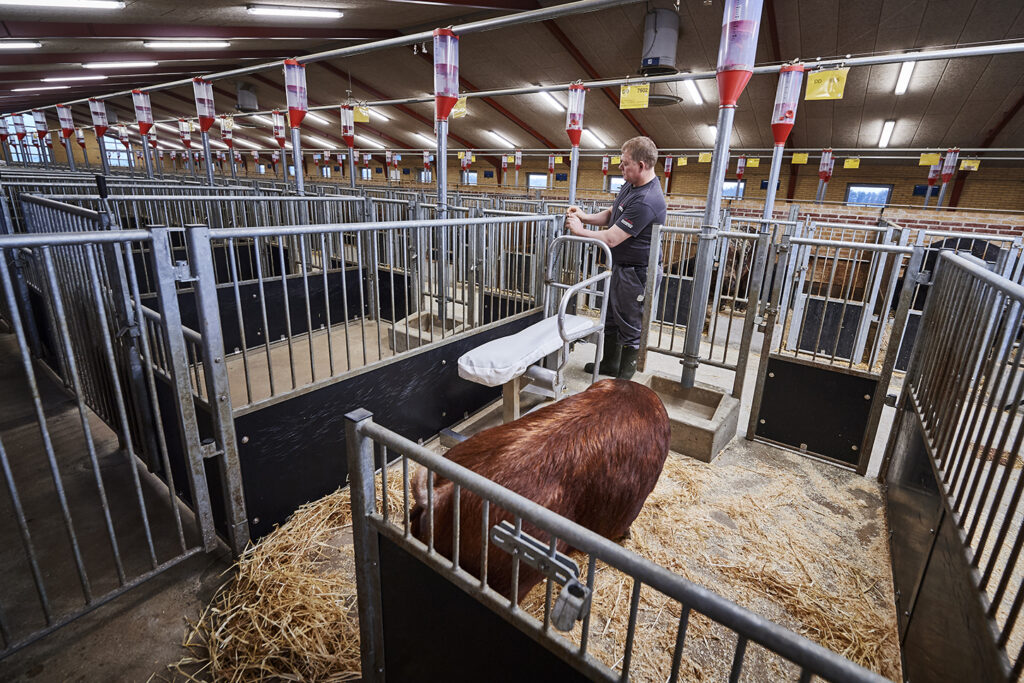 |
Step 2: Empty the foreskin, the first output must be disposed of to make sure that the collected semen is clean. When emptying the foreskin, help the boar by grabbing and stroking the outside of the penis.
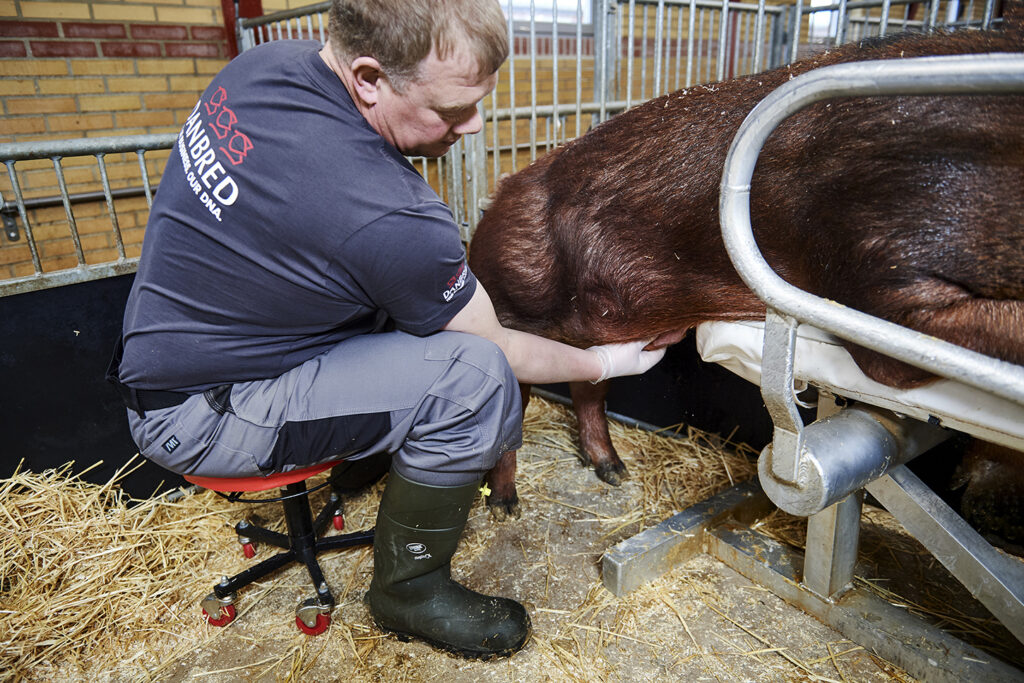 |
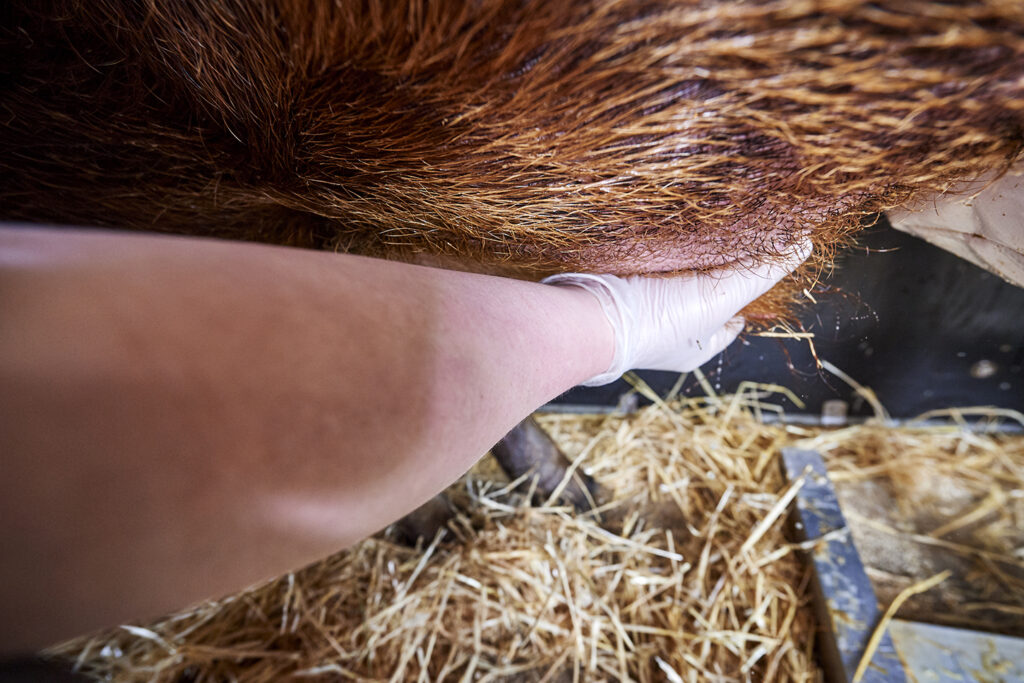 |
When the foreskin has been emptied, remove the first pair of gloves, since these has now been contaminated.
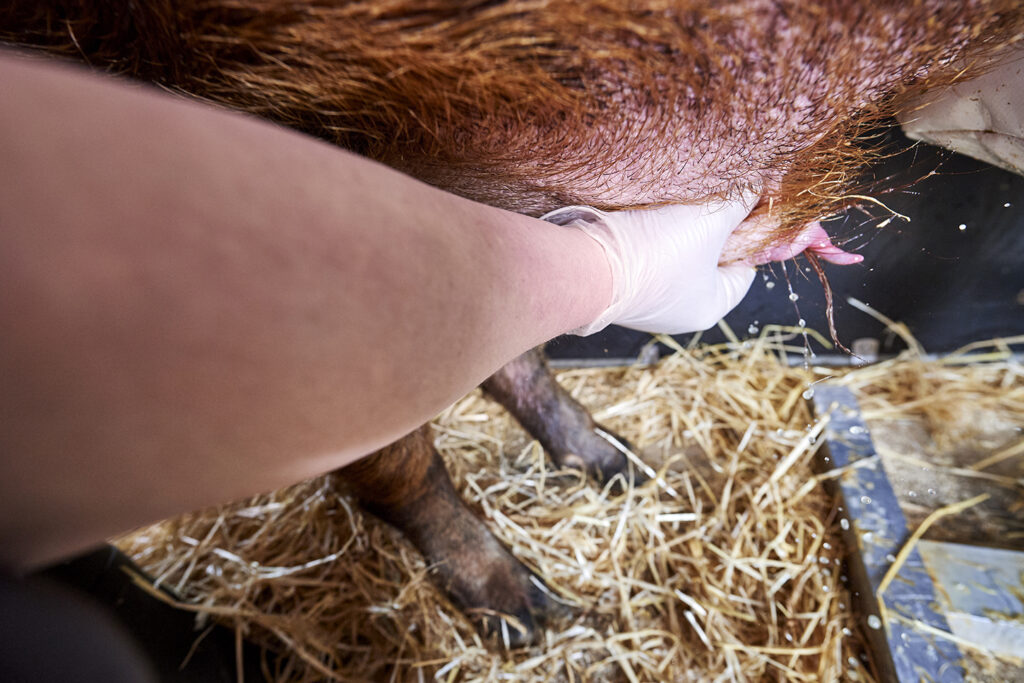 |
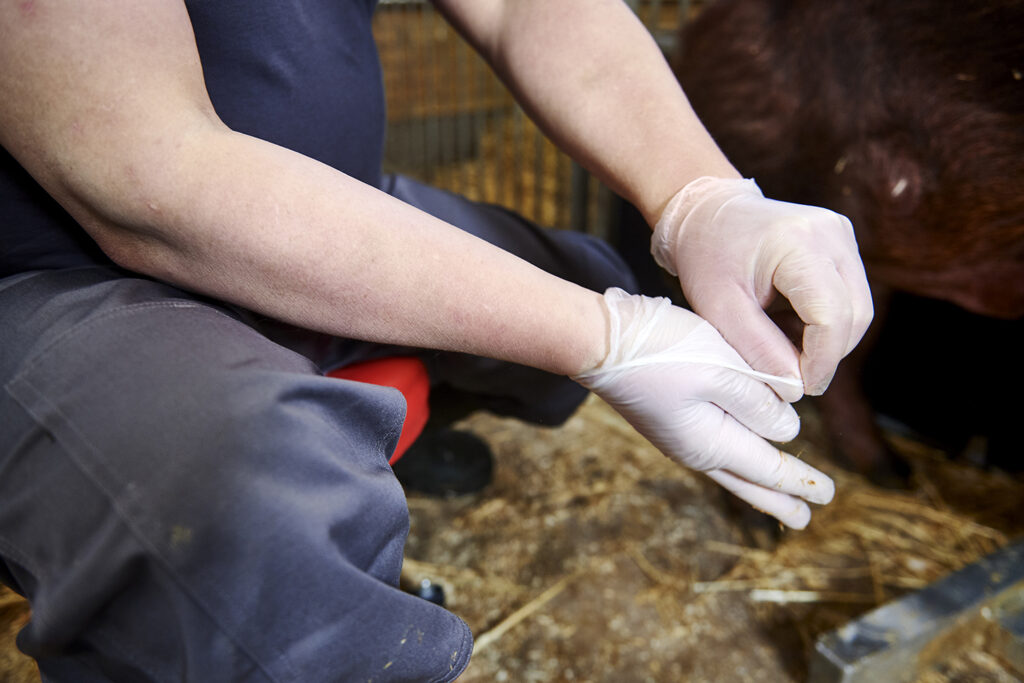 |
Step 3: Now you can begin collecting semen in the prepared plastic containers. Wear the clean glove for collecting.
1. Grab the penis with the dominant hand, and the prepared plastic container in the other.
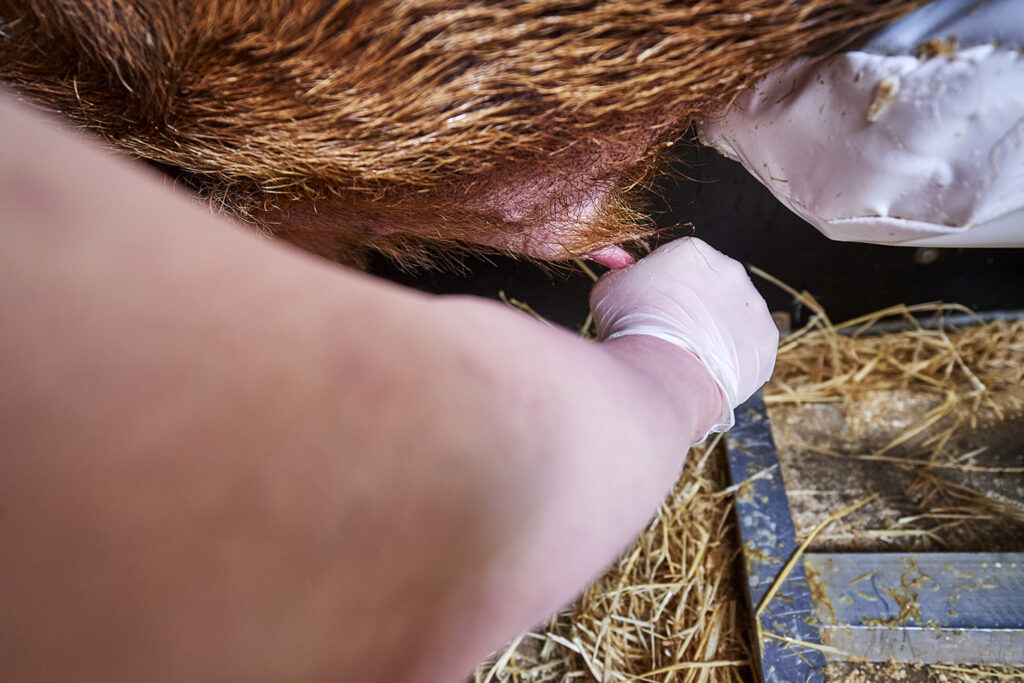 |
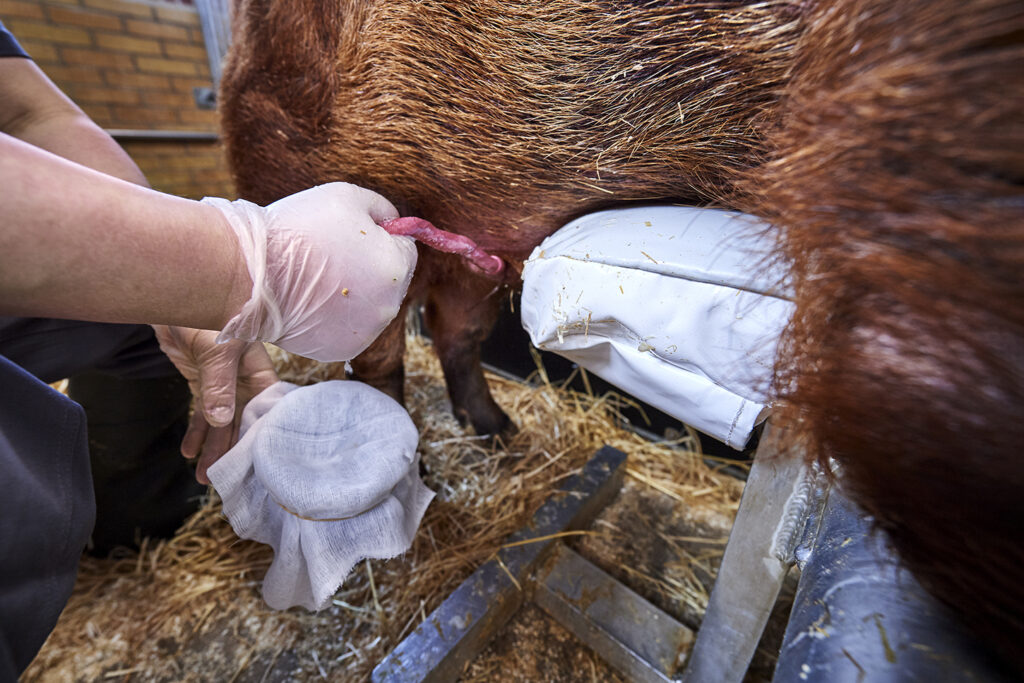 |
2. When the boar goes “tense” wait 5-8 seconds, before placing the plastic container underneath the penis.
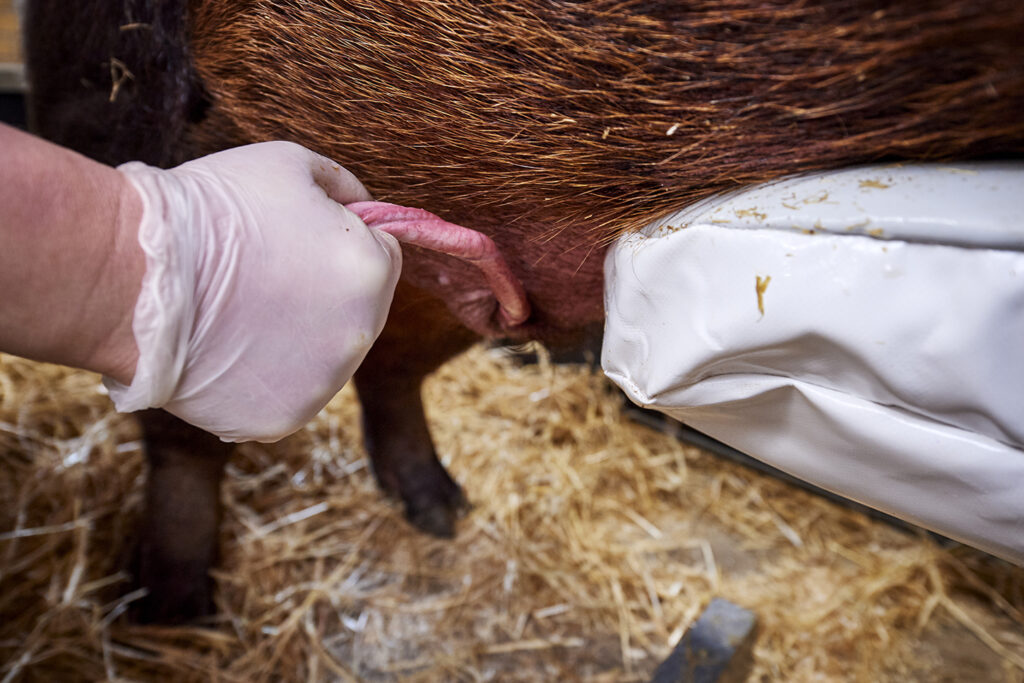 |
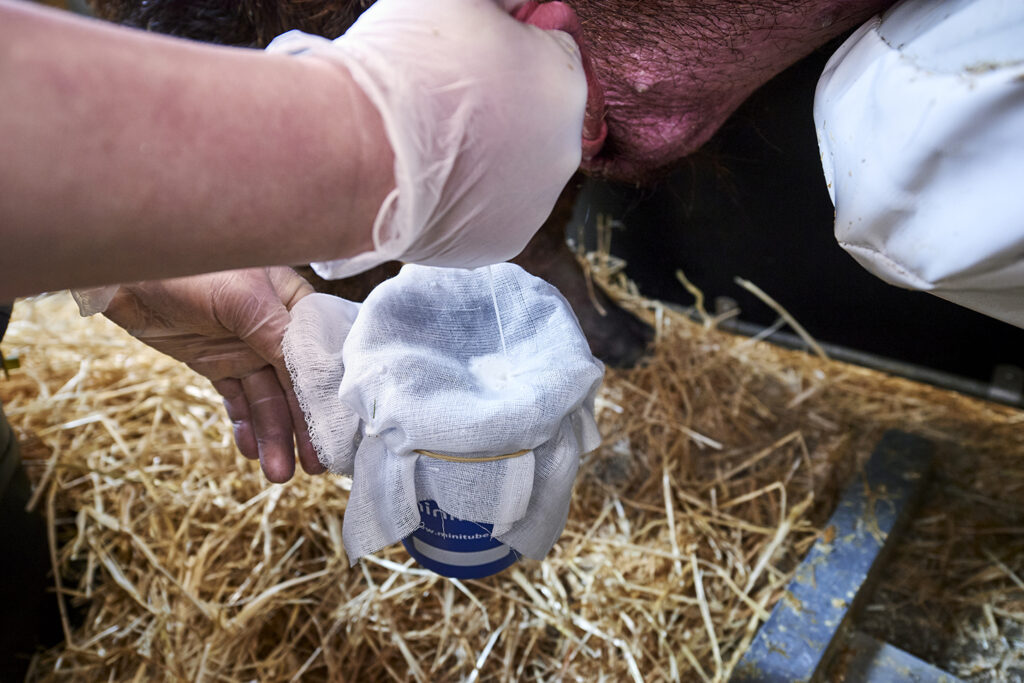 |
This ensures that only high-quality semen is collected after the initial passing of urine and pre-sperm ejaculate.
|
|
|
3. When the actual collection begins, make sure that the penis is held at a height that prevents any urine secretion from contaminating the semen.
|
|
|
4. Keep a firm grip on the penis until the boar is finished, but open the last fingers up a little bit, to allow a free flow of semen.
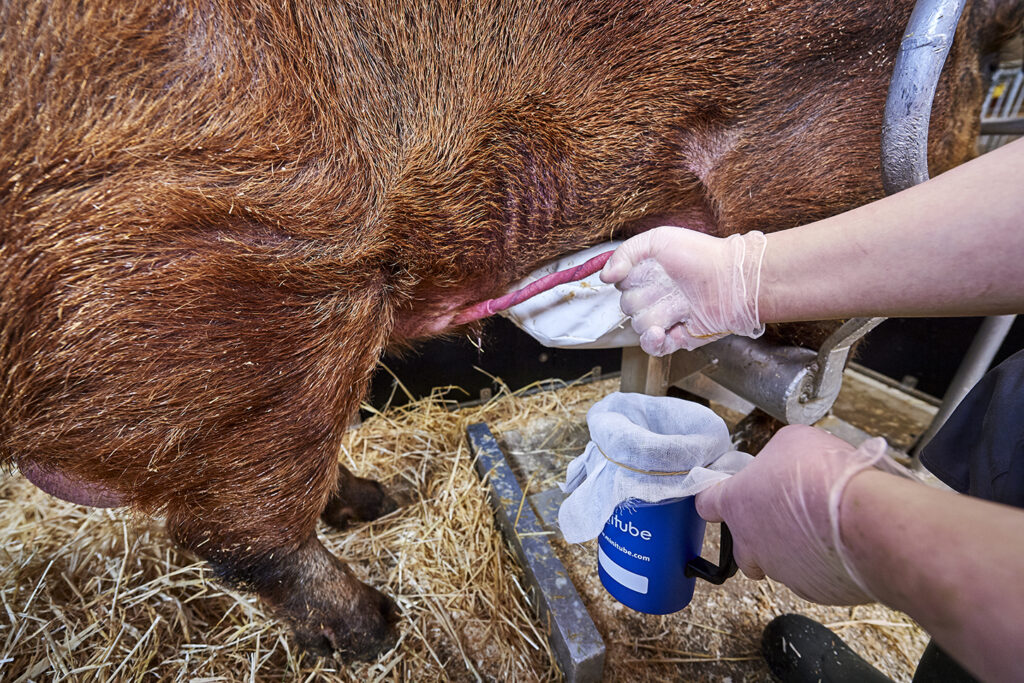 |
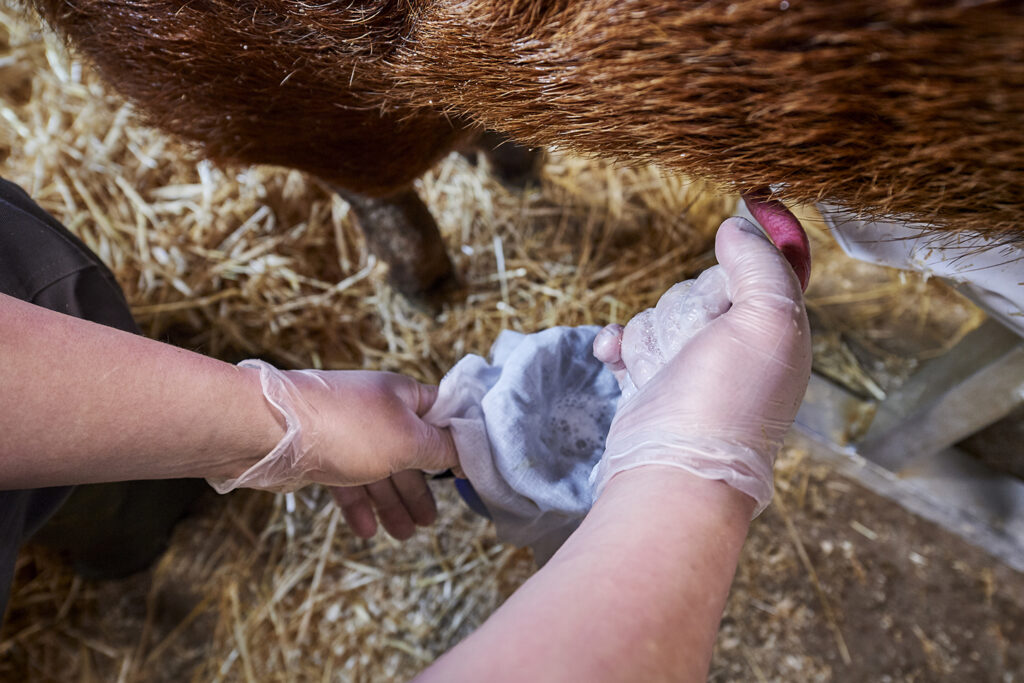 |
This entire process usually takes 8-10 minutes, and ends up with a gelatinous sperm fraction.
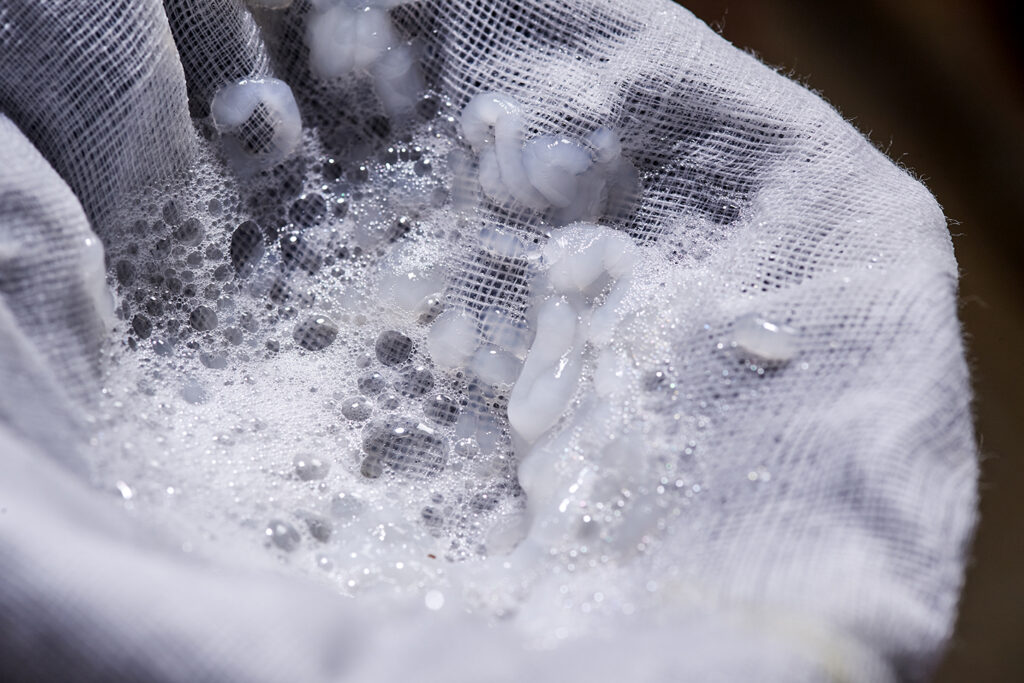
5. The boar will have finished when he retracts the penis and becomes more aware of his surroundings. Allow the boar to relax after collection, and make sure that he can dismount the dummy on his own.
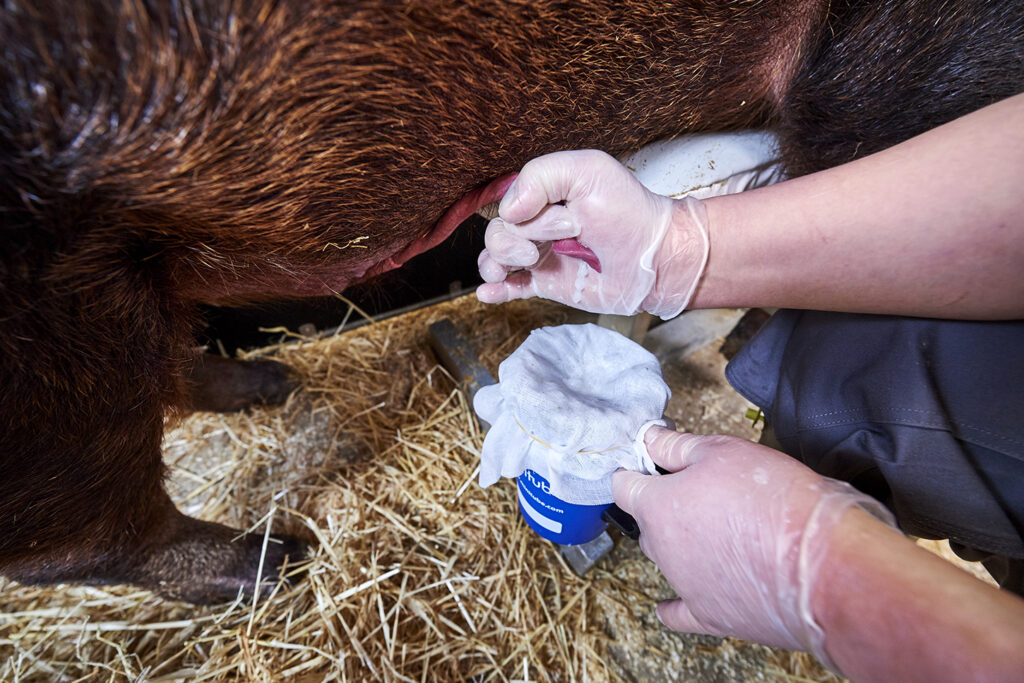 |
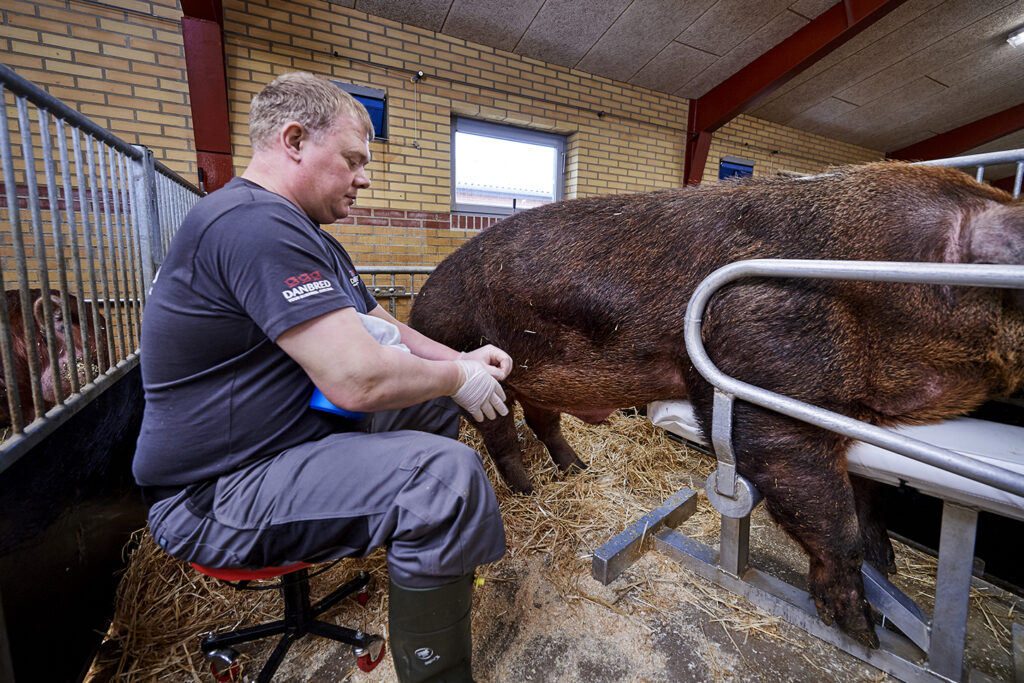 |
6. When the boar has finished, remove the dummy along with all other equipment.
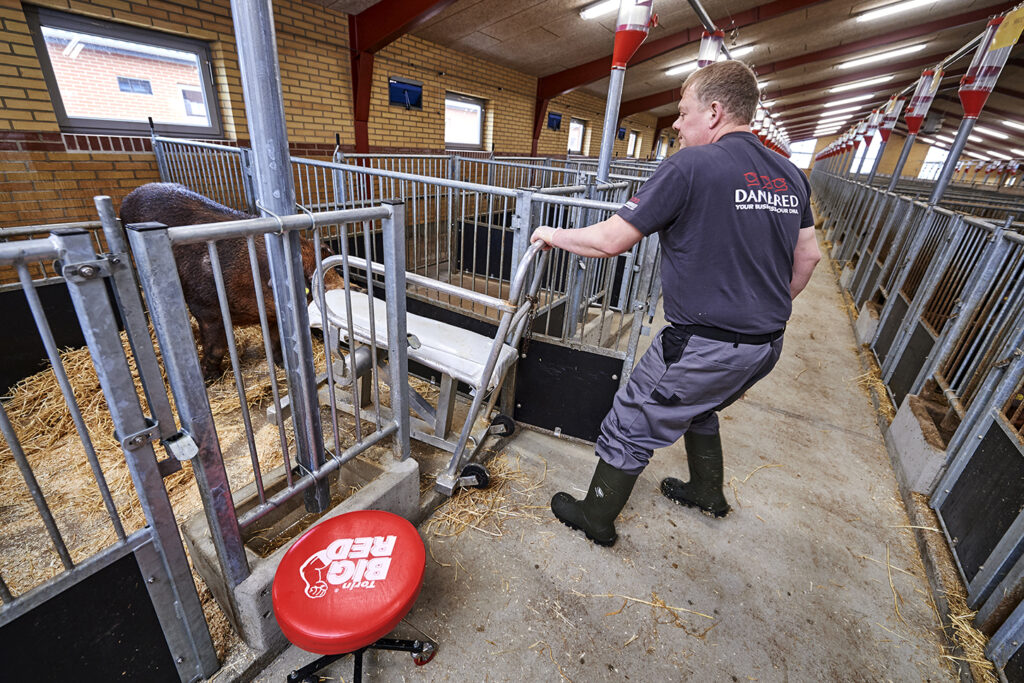 |
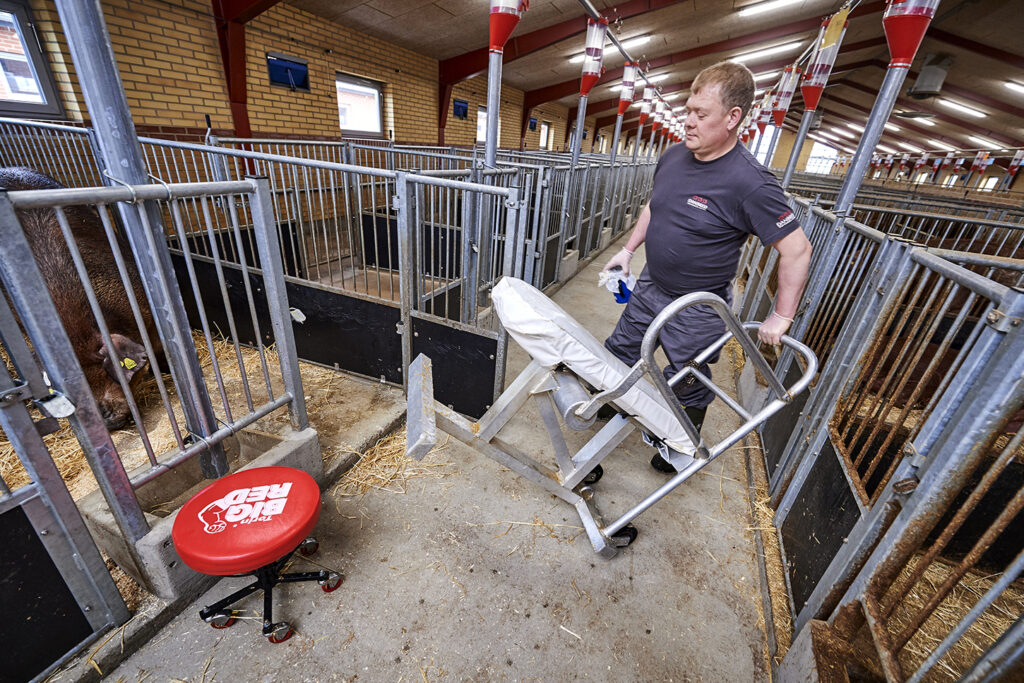 |
7. After collection, reward the boar with a treat.
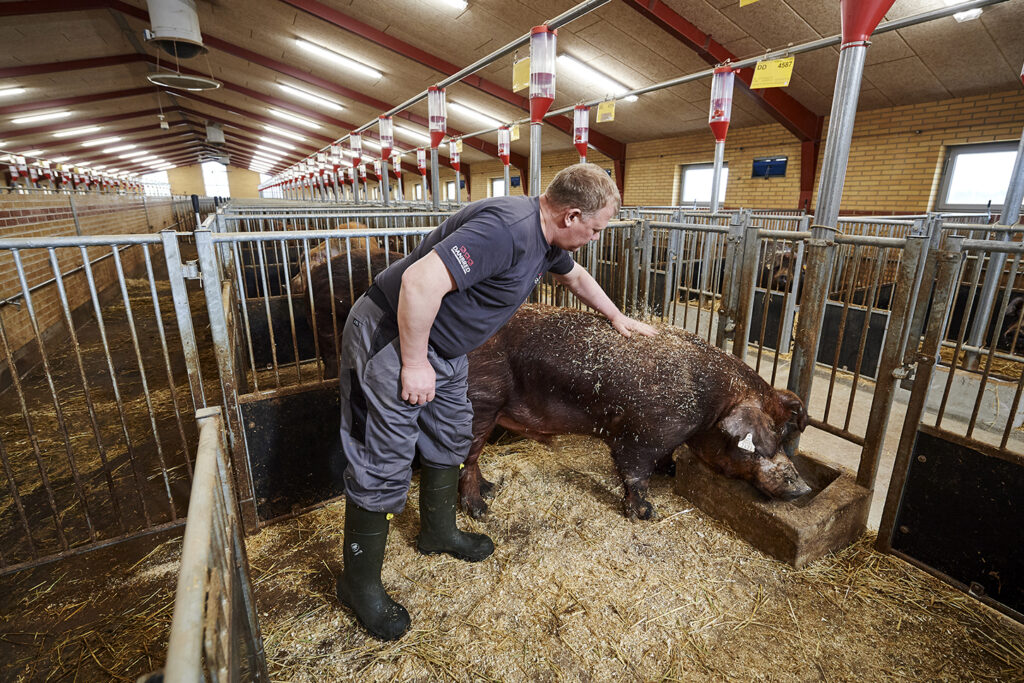
Make a collection plan for the boars to ensure mounting intervals, sperm count and semen quality are all optimal.
The number of collections per week should be based on the age of the boars.
| Age of the boar | Collections per week |
|---|---|
| 8-9 months | 1-2 |
| 12 months | 1-2 |
| ≥12 months | 1-3 |
Example of collections Hatting KS (Danish DanBred A.I station)1:
| Boars | Av. Age at collection, Months | Sperm count per collection, Billions (109) | Collection Frequency, #/week |
|---|---|---|---|
| DanBred Duroc | 13.0 | 80.8 | 1.11 |
| DanBred Landrace | 10.5 | 82.8 | 0.93 |
| DanBred Yorkshire | 10.5 | 77.9 | 0.94 |
1 Numbers are based on 140,000 collections at Hatting KS during 2017
Bear in mind that the semen of boars not included in the collection plan should still be collected for maintenance.
Wrapping up a successful collection day
When the collection has ended, it is time to make sure that the hygiene levels are ready for the next collection day.
1. Clean the dummy to maintain proper hygiene. The dummy must be washed with a high-pressure hose after a day of collection – and remember to clean underneath the dummy.
 |
 |
2. Check the dummy for maintenance to make sure that it is intact and safe to use. To make sure the dummy is always be fully functional, carry out maintenance on a routine basis.
|
|
|
3. If the cover on the dummy is replaceable, make sure you change it when necessary – at least every 6 months.
|
|
|
4. Clean all of your equipment without exception after use.
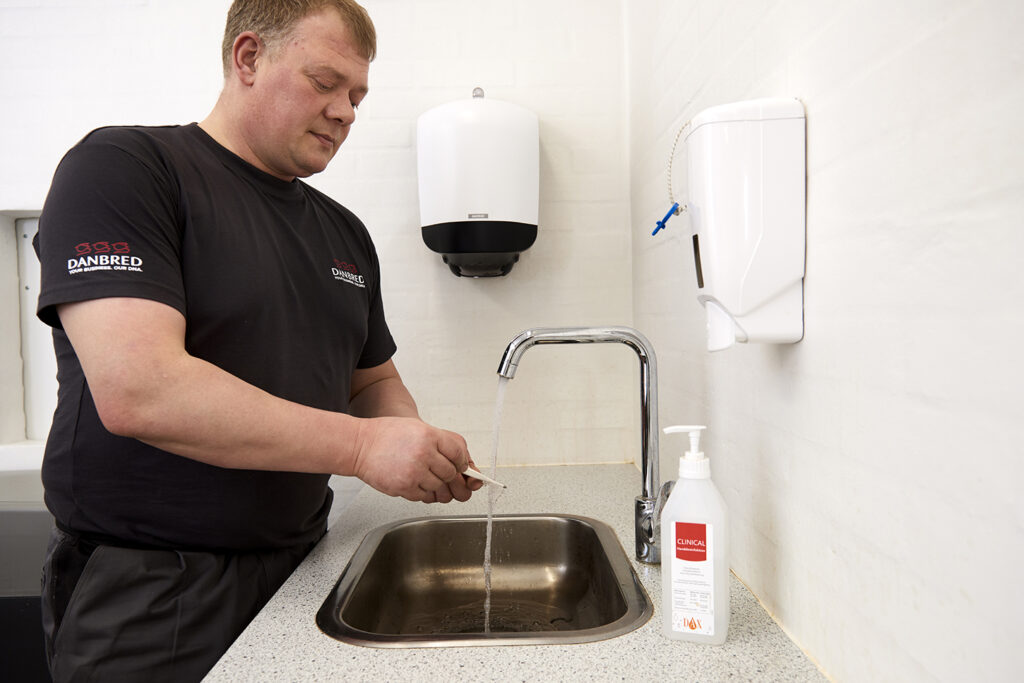 |
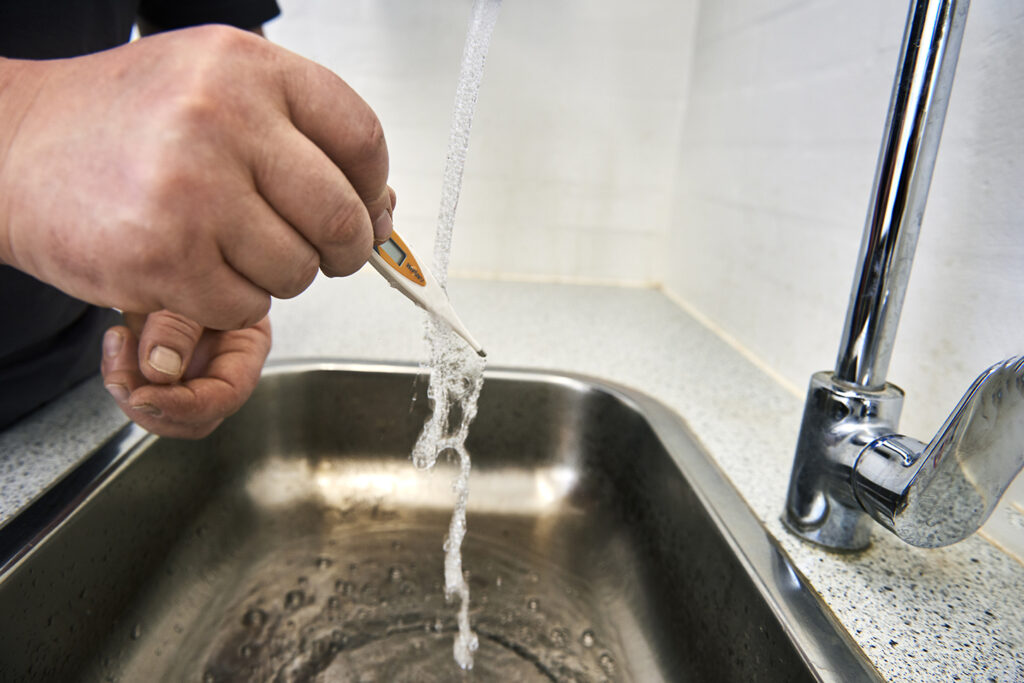 |
5. Make sure that all equipment is removed from the collecting area to minimise the risk of bacteria and dust gathering. If possible, take the equipment to the lab.
